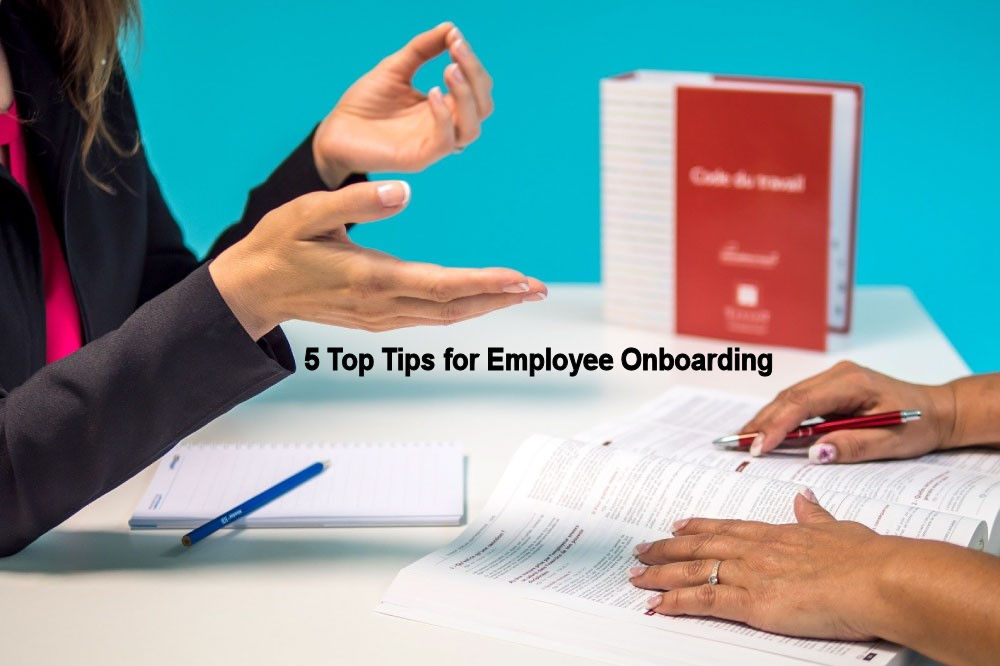Businesses grow and thrive by recruiting the right talent. However, many companies lose a large percentage of their new hires within their first year, and so the recruiting process starts all over again.
This can be attributed to the lack of a structured employee onboarding program.
With an effective onboarding program in place, there is a higher chance of retaining the new talent you have acquired.
Here are our five top tips for employee onboarding to ensure the process runs smoothly.
5 Top Tips for An Effective Employee Onboarding Process
1. Start the Process Before the Employee’s First Day of Work
The onboarding process starts when you offer a person a job and they accept the offer. It includes the initial orientation and training, and it only ends once they start working in the role and have their first performance reviews.
Generally speaking, the onboarding process can take up to 6 months. This is dependent on the nature of the work, the new hire’s skills, and their ability to adapt to their work environment.
Therefore, an early start and a strategic process with ongoing performance metrics will guarantee a successful onboarding experience.
With this in mind, start the employee onboarding process prior to your new employee’s first day at your organization.
Welcome them to the company by taking them for coffee or lunch. Prepare them for what to expect and establish an understanding of the company’s mission statement.
You should also provide new hires with an information pack that includes a full job scope. Give them all the relevant information they need in order to fulfill their position. This will help to get them up to speed with the overall role they will play in the organization.
2. Use an Onboarding Checklist for The Employee Onboarding Process
Employee onboarding should be an organized process. An onboarding checklist will help hiring managers keep track of each new employee, and the onboarding tasks that need to be ticked off.
Typically, the checklist will include all aspects of the new employee’s orientation and training programs. The good news is that you can customize your checklist according to your company’s unique needs.
Hiring managers who use an employee onboarding process checklist will immediately be able to see if any areas in the onboarding process are lacking.
These shortcomings can then be addressed, which further streamlines the process for future hires.
3. Lean on Employee Onboarding Software and Tools to Streamline the Process
There may be times when you have to introduce several new hires to the business at once. Keeping everyone engaged and ensuring they get all the assistance they need during the onboarding process can be stressful, especially while carrying on with business as usual.
This is where employee onboarding software and tools come in. With the proper use of employee onboarding software, you can be sure to have an effective onboarding process with minimal time and effort.
With just a click you’ll avoid all the new hire paperwork that wastes valuable time and resources, without compromising the quality of the process. And you’ll easily be able to manage multiple new hires, even if they are all in different departments.
4. Make the New Employees Feel Like Part of The Team
Engagement with co-workers, even in cases of remote work, can play a vital role in your employees’ day-to-day lives. When people feel that they are a part of the team and that they bring value to the company, they will work more efficiently.
Many companies use other employees in a “buddy system” for onboarding their new employees. This onboarding partner should work closely with the new hire for their first few weeks to guide them through the ins and outs of your company culture, as well as give them advice based on their own experiences.
Do not underestimate the importance of establishing job satisfaction early on with a memorable onboarding process.
This will help new employees feel that they belong in the company and will motivate them to meet your performance expectations.
Happy employees tend to remain loyal towards their organization and stick it out even when the business goes through rocky times.
5. Know the Difference Between Onboarding and Training
Onboarding new hires is not the same thing as training. Onboarding is a systematic process by which you implement training with the introduction of new employees to your business.
New hire onboarding should not focus solely on training, nor should it be focused solely on welcoming your new hires.
It is a combination of both, and they are equally important. Employees who have gone through an effective onboarding program are more likely to stay on with the company beyond the first year. But remember to
keep the channels of communication open.
Your new employees may have many questions, and you want them to feel that they can communicate these to you.
To facilitate ongoing communication and collaboration, give your new employees access to the tools they need and explain how it all works.
Ensure that your new hires feel confident enough to ask about things that they don’t understand.
In Conclusion
The employee onboarding process begins from the moment the new hire accepts your job offer and can last well beyond your new employee’s first day on the job.
Ensuring that each person is well taken care of is imperative. This can be achieved by effectively communicating and ensuring that a proper introduction is made with their team.
Using tools such as an onboarding checklist is essential to ensure that you have covered all the finer details involved in bringing a new person into the business.
Implementing employee onboarding software will free uploads of time and effort for HR and hiring teams.
Get in touch with our team today to find out more about Staffing Soft’s solution for Recruiters and HR professionals.
